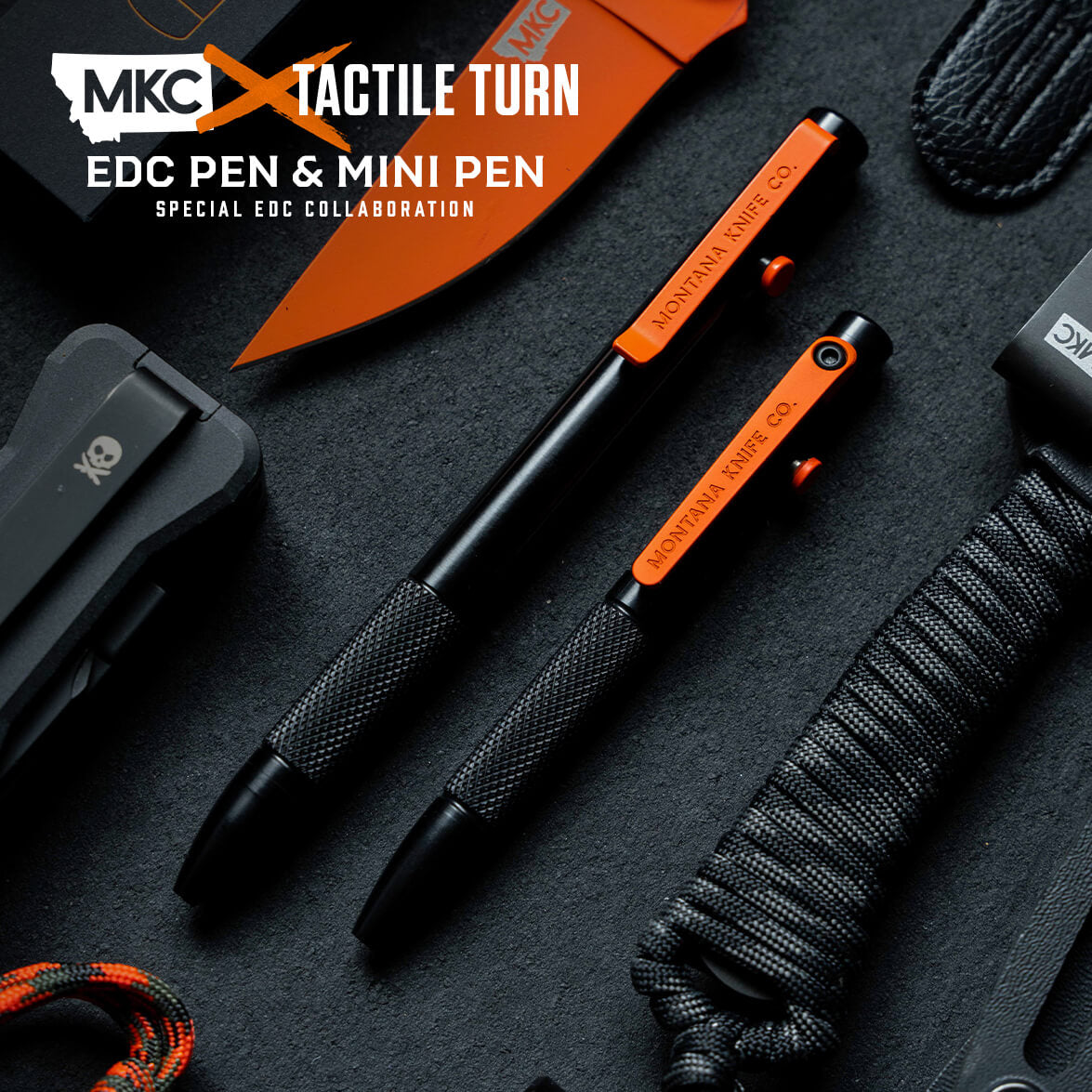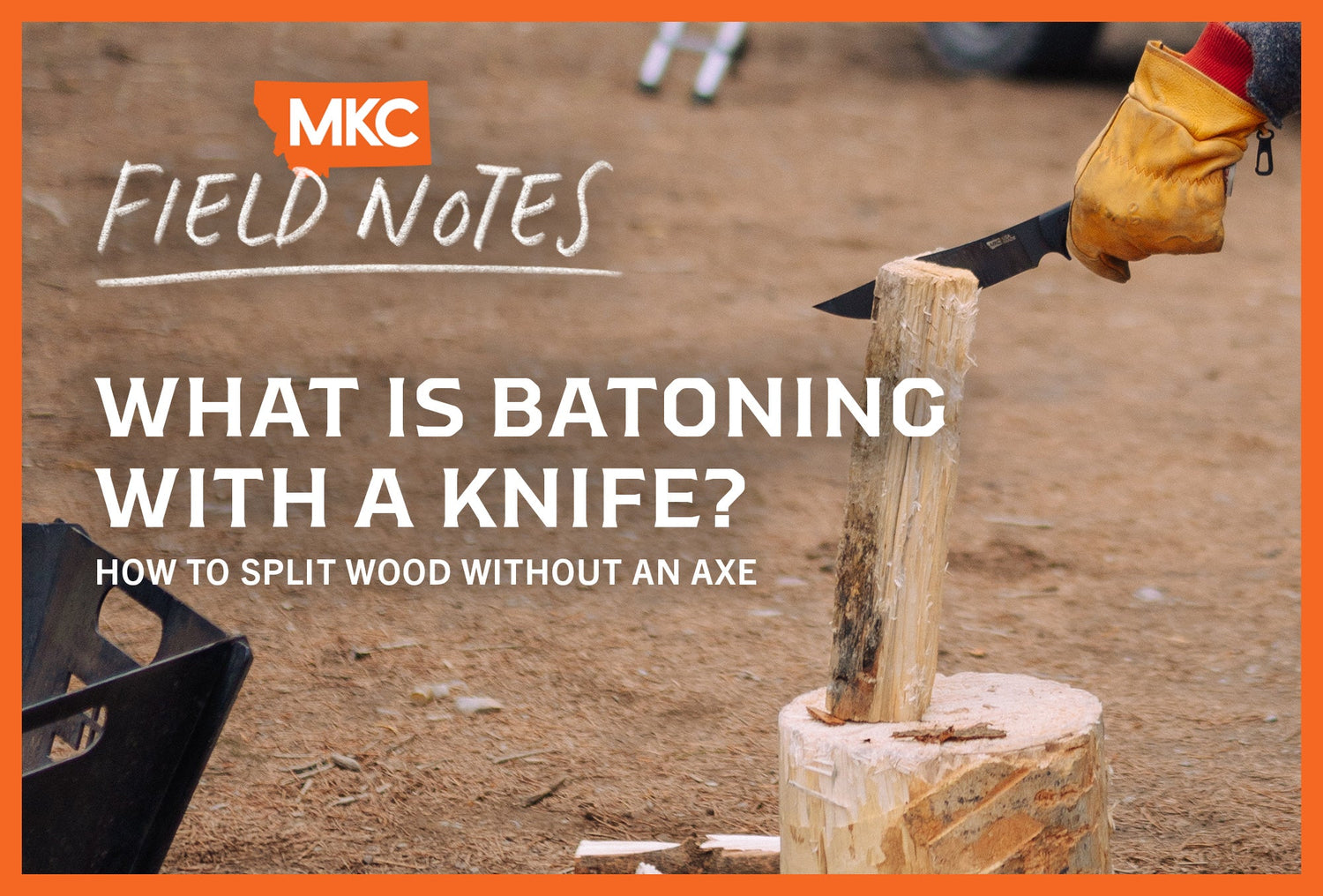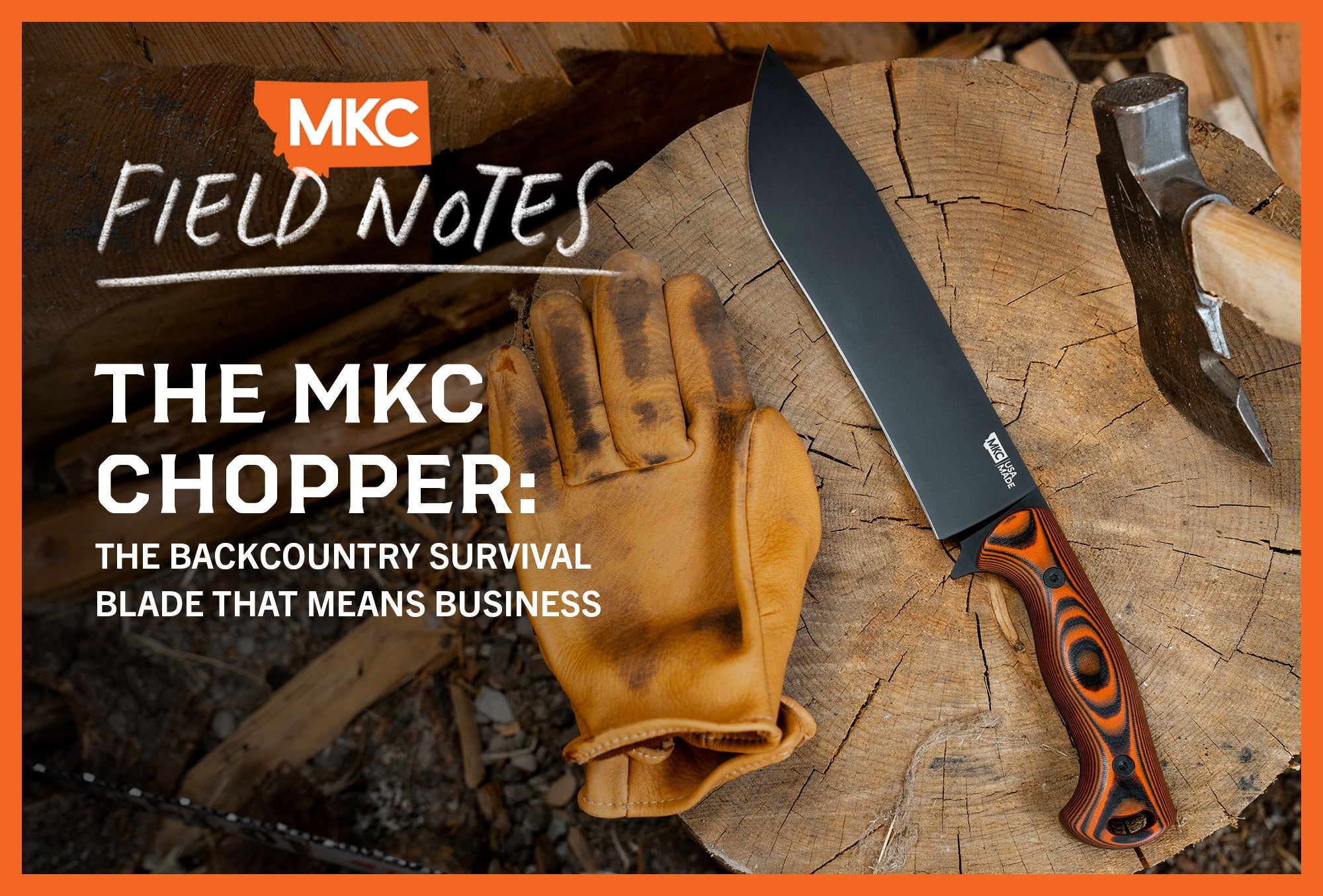When you’re roughing it, having a roaring campfire to keep you warm and dry is non-negotiable. Any hunter worth his salt can gather wood for a fire, but what do you do when there’s no dry tinder? What is batoning with a knife, and how can it help you?
Batoning wood is a method of breaking wood down into smaller pieces without a hatchet. It’s helpful in a pinch (or after a sudden downpour). It’s the best way to create small, dry tinder pieces without larger tools.
Here’s how to do it, and how to choose the best batoning knife for your next outing.
What Is Batoning With a Knife?
“Batoning” is a bushcraft technique that involves using a knife and a “baton,” or hammer stick, to split wood. You drive your knife through the wood by hitting it with the baton. (We’ll elaborate on this in a bit.)
This technique is especially useful when the small kindling around you is too wet to burn. Batoning with a knife allows you to expose the dry centers of larger timber pieces to use instead.
This technique also comes in handy when there’s no small kindling available, such as in areas recently affected by wildfire. It can even be useful for whittling and crafting if you find yourself with some downtime at camp.
Batoning vs. Splitting
While batoning and splitting yield similar results, they’re pretty different in practice.
Batoning with a knife is more controlled, so it’s safer than swinging a hatchet or a small axe. Since your chance of injury is lower, it’s a better technique for backcountry use.
Batoning is also important for ultralight packers. Hatchets and small axes can be heavy, but a folding saw paired with a large knife often weighs the same or less. Plus, if your hands are cold, knives are easier and safer to work with than hatchets.
Despite that, knives aren’t ideal for splitting wood. While a fixed-blade knife works in a pinch, an axe or hatchet’s purpose is to chop wood, and its design follows that.
Axes and hatchets make use of leverage and long handles to facilitate easier wood splitting. Batoning with a knife, on the other hand, relies on muscle power and force. While the action of batoning wood is smaller, the payoff is smaller, too.
That said, batoning is still an essential survival skill. If you don’t have an axe or hatchet with you, batoning with a knife is your best option.
As useful as batoning is, a knife is never a true replacement for an axe or hatchet. If you need to split cords of wood to heat your cabin, batoning isn’t the technique you’re looking for. But it’s perfect for harvesting dry kindling, whittling, and surviving in emergencies.

Types of Batoning Knives
The best knife for batoning wood always has a fixed blade. A folding knife has the potential to snap in on itself and injure the user. Not to mention, fewer moving parts mean fewer pieces that can break under a baton’s force.
On top of that, most folding knives are too small to split wood. The longer the blade, the larger the wood you can baton.
Speaking of force, your knife’s construction matters, too. The best batoning knives have a sturdy spine (at least 5/32″ thick and 4.5–5″ long or longer) and a full tang.
I prefer G10, carbon, or micarta for the handle, as these materials hold up well against repeated impacts. Synthetic handles also absorb shock better than rigid materials.
A tough, high-carbon blade is a must. My favorites are 52100, CPM 3V, and MagnaCut steel. Brittle steels can shatter under the baton’s force.
Finally, your batoning knife’s edge geometry affects its performance. I like a saber grind for batoning with a knife, as the wedge-like shape helps push the wood apart.
Make sure you select a knife that allows you to perform other necessary tasks. I have a two-purpose rule for each item in my pack, so I like a backpacking knife with a high saber and a thick spine. This allows me to process game and perform basic bushcraft while out in the field.
How to Baton Wood With a Knife Effectively
The best batoning setup requires only your batoning knife, a wooden “baton,” and a clear area of solid ground.
To start, position your splitting wood vertically on the ground, with the edge of your batoning knife on the top edge of the wood. Make sure your knife cuts with the grain, and at least one-third of the blade extends over the wood’s edge.
Then, hold your knife’s handle in your non-dominant hand and use your baton to smack your knife’s spine. Repeat as the blade travels down through the wood until the wood fully splits. Try to hit as far from your knife’s tip as possible to avoid damaging it.
If your blade is too small to pass all the way across the wood’s circumference, start batoning close to the edge to remove exterior splits. If you’re looking to split logs significantly larger than your arm’s circumference, consider bringing a hatchet next time instead.
The secret to batoning effectively (and keeping your knife intact) is proper technique. Batoning wood with a knife inevitably puts stress and wear on your blade, but good technique can minimize that wear and tear.
First, always baton with a straight, sharp knife. Most knives break when batoning at an angle. Your knife has a strong and sturdy spine that can handle baton impacts, but if you try to baton at an angle, you might strike the blade itself. Plus, an unstable angle can put you at risk.
Second, never baton with objects harder than wood. Rock and metal can damage or break your knife. The best tool in the bush is another piece of wood, but if you’d like to bring a dedicated mallet with a wood or rubber head on your tip, those work, too.
Third, don’t bite off more than you can chew. The larger the log you choose, the more difficult the batoning process will be. Plus, wet logs are more difficult to split than dry ones. It’s never a bad idea to start with a conservatively sized log until you get a feel for the process.
Finally, don’t force it. Wood can be full of knots and other irregularities, such as bullet holes and nail marks. Rather than risk your knife’s integrity by forcing it through a tough spot, try again from the other side or choose a different piece of wood.
Keep any body parts out of the line of fire while you’re batoning with a knife. Be careful not to smash any fingers!
What Is Batoning With a Knife? Final Thoughts
So, what is batoning with a knife? Batoning wood is a foundational skill for any outdoorsman or hunter. Its uses are endless, and you never know when it’ll come in handy.
Next time you set out on the hunt, try batoning with a knife in the field. Practice during inclement weather for the best preparation.

by Tristan Richter, valued MKC Team Member






































